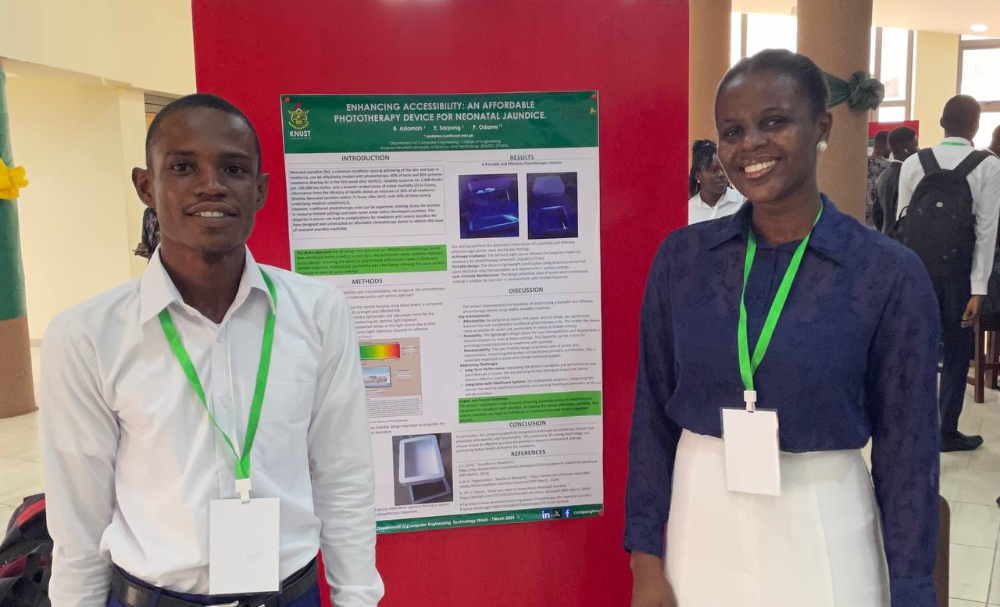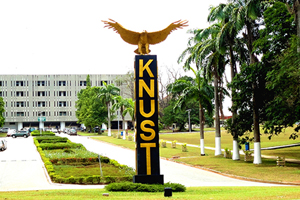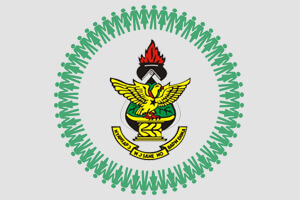Two final-year students at the Kwame Nkrumah University of Science and Technology (KNUST) have developed a low-cost phototherapy device to treat neonatal jaundice in newborns.

The device, designed and built by Ebenezer Sarpong and Beatrix Afua Korang Asiamah from the Department of Computer Engineering, uses blue light to reduce high levels of bilirubin in infants.
Neonatal jaundice, which presents as a yellow discoloration of the skin and eyes, occurs when there is too much bilirubin in a newborn’s blood.
Phototherapy is the most common treatment for this condition. The blue light helps break down the excess bilirubin, making it easier for the baby’s body to eliminate it.
However, phototherapy machines are often expensive and difficult to obtain, especially in resource-limited hospitals and clinics.
The goal of the students’ project was to create an affordable yet effective phototherapy machine. Their design focused on three key elements: selecting the appropriate type of light, ensuring efficient light delivery to the baby, and incorporating controls to monitor the device’s functionality.
The result is a functional prototype that meets the basic requirements for standard phototherapy treatment. It emits sufficient blue light to treat jaundice, is safe and user-friendly, and costs significantly less than existing commercial devices.
Their supervisor, Dr. Prince Odame, provided guidance throughout the design and testing phases. The project is one of many student innovations at KNUST that demonstrate how engineering and technology can help address real-world health challenges in Ghana and beyond.
This device could offer a practical solution for hospitals and clinics that require reliable phototherapy machines but lack the funds to purchase conventional models.
With further development and regulatory approval, the design has the potential to help many newborns receive timely treatment.
Neonatal jaundice is a major concern in newborn care, particularly in low-income areas. If left untreated, it can lead to severe brain damage or even death. Increasing access to effective treatment could save countless lives.
The phototherapy device developed by Sarpong and Asiamah is a strong example of how student research can lead to impactful innovations in healthcare. The project was completed as part of their final-year requirement in the Department of Computer Engineering at KNUST.


















